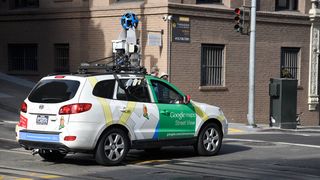If Australia wants lasting economic resilience amid the worst economic climate in nearly a century, it should prioritise bolstering economic ties with the United States.
Australia’s “security partner” invests more in Australia’s most future-oriented sectors than any other country and imports the largest share of Australia’s innovations. While exports of iron ore, grain and wool to China defied global trade trends and increased from last year, they do not represent the next stages of Australian economic growth.
The exact nature of this future economy and Australia’s role in it is uncertain, but its direction is clear: services will become more important, value creation will be tied to knowledge-intensive and automated processes and skills, and firms and individuals will need flexibility and resilience. In short, success in the future global economy will require countries and companies to be more innovative.
The exact nature of this future economy and Australia’s role in it is uncertain, but its direction is clear: services will become more important, value creation will be tied to knowledge-intensive and automated processes and skills, and firms and individuals will need flexibility and resilience.
These global shifts – most acutely visible in the digital transformation of everything from shopping to media consumption and the need for flexibility and resilience, particularly amid strategic competition between the US and China – have been accelerated by the pandemic.
The most resilient players in the global economy are shifting in a more innovative direction but Australia, by many measures, is not. Nearly three decades of a recession-free economy hid a less than rosy economic future: even before the pandemic, economic trends in Australia were not headed in the same direction as the global economy.
In global rankings of economic complexity – a measure often correlated with future economic growth – Australia ranks 87th, falling behind countries like Uzbekistan and Botswana. Knowledge-intensive work has not been prioritised, with Australia’s research and development spending as a percentage of GDP decreasing every year of the past decade.
Australia’s innovation ranking has fallen steadily out of the top 20 in the world. It was recently determined that Australia is the country most economically reliant on China out of the Five Eyes nations – a growing challenge to resilience when Australia’s top trading partner has increased its use of economic coercion.
Unlike Australia’s economic relationship with China – which has been sizeable yet dominated by unprocessed natural resources, tourism and foreign students – Australia’s relationship with the US is built on an innovative foundation. It will also prove far more important to Australia’s economic future.
Knowledge-intensive work has not been prioritised, with Australia’s research and development spending as a percentage of GDP decreasing every year of the past decade.
The cumulative story of the US-Australia economic relationship is striking: Australia’s $1.8 trillion investment relationship with America is significantly larger than its relationship with any other country, with the US direct investment footprint in Australia being more than 60 per cent larger than the second largest direct investment footprint in Australia, which belongs to Britain.
Cumulatively, US firms in Australia employ more, sell more, own more, spend more, export more and contribute more to Australia's GDP than foreign firms from any other country. The US is also, cumulatively, Australia's largest two-way services trade partner, with services trade in 2018 being 27 per cent greater than with Australia’s second largest services trading partner, China.
Yet the cumulative amount of Australia’s economic ties with the US is just one part of the story.
The average employee of a US firm in Australia contributes three times as much to Australia’s GDP as the average employee of an Australian-owned firm and 22 per cent more than the average employee of a non-US foreign-owned firm in Australia.
And in terms of wages, the average employee of a US firm in Australia is paid $22,000 more a year than the average employee of an Australian-owned firm and about $2000 more a year than the average employee of a foreign firm in Australia that is not US-owned.
Biggest role in critical sectors
While it is remarkable that US investment is larger than that of any other foreign nation in 14 out of 19 sectors in Australia’s economy, it is even more remarkable that some of the largest US investments occur in sectors that are arguably most critical for Australia’s future economic growth: manufacturing; information media and telecommunications; and professional, scientific and technical services. In these three sectors, US firms are not only the largest foreign investors, but no other country’s investments are even half the size of the US investment footprint.
US-Australia services trade is also dominated by future-oriented industries too, most visible in three key areas: intellectual property charges (the use of patents, trademark and copyrights); other business services (comprised of R&D services, professional and management consulting services, and technical, trade-related services); and telecommunications, computer and information services.
For more than 20 years, Australia’s trade with the US in these three key service types has been larger than with any other country.
In addition to extensive business links, the US and Australia have also collaborated for decades on path-breaking scientific work, ranging from space to medical research.
In an era when Australia is trying to navigate both the worst economic environment in modern history as well as ever expanding strategic competition between the US and China, Australia needs stability. With decades of diverse and innovative economic engagement and a robust security alliance, no economic relationship will prove more important to Australian innovation and Australia’s future economy than that with the US.






